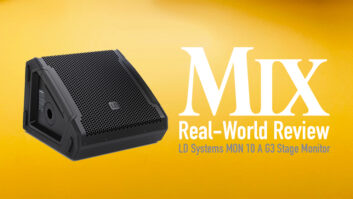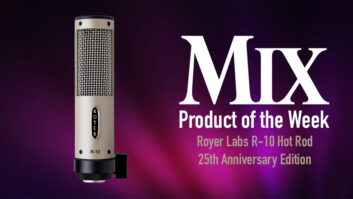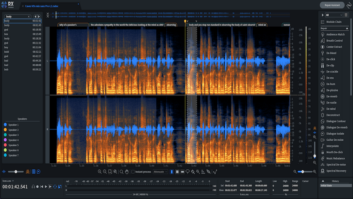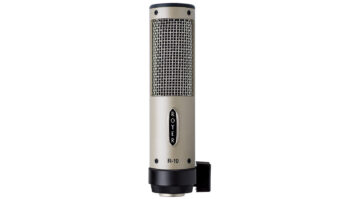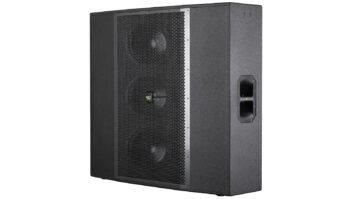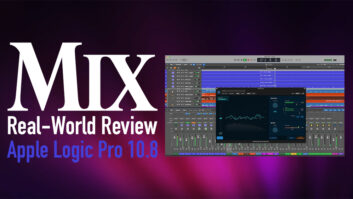Great companies are often born out of necessity. Ten years ago, corporate giant Mark IV (at the time, the parent company of Electro-Voice) was looking to expand its audio empire and completed negotiations to purchase Klark-Teknik, a British company that specializes in pro outboard equipment for the live sound market. The acquisition was a good fit for the Mark IV Audio Group, but the corporation wanted K-T to focus strictly on analog gear, preferring that another of its holdings (the German-based Dynacord) handle the group’s DSP development.
The decision didn’t sit well with some of K-T’s engineers who were excited about the possibilities of digital — particularly, in speaker control — but saw little challenge in simply creating more analog equalizers and crossovers. One K-T hardware engineer, Andrew Grayson, set out to find his own company that would focus on high-end analog and digital solutions for live sound applications. He was soon joined by software design engineer John Austin and Terry Clark, the original co-founder of K-T. Another early partner in XTA was Jack Kelly, who had been the U.S. distributor for K-T and launched his new company, Group One Ltd., to distribute Celestion, Cadac, Milab, MC2, Clay Paky — and XTA. Group One has since expanded into product development with its acclaimed Blue Sky studio monitors and Elektralite lighting controllers.
Every company needs a name, and for a while, the new team joked about calling their new venture XK-T. Wanting to establish its own identity, the new company was named XTA Electronics, with the acronym referring to the “crossroads of Technology and Audio Applications.” Eventually, the company outgrew its humble beginnings in a spare bedroom in Grayson’s house in England’s west Midlands, and moved to far more spacious quarters in a riverfront facility in Stourport-on-Severn.
XTA’s initial products included the RT1 (a unique unit combining a third-octave RTA, SPL meter, RT60 analysis and a swept frequency analyzer), the DS400 mic/line distribution system and the GQ600 graphic equalizer. Today, the DS400 lives on as the expanded/enhanced DS800 8×32 mic/line splitter; 10 years later, the high-performance dual 32-band GQ600 is still in production — an impressive testament to any product; and the RT1 laid the foundation for what was to come. Besides the GQ600 and DS800, XTA’s current product line includes the popular DP224 and DP226 speaker-management systems; the DP100, DP200, DP202 audio processors; and the SiDD (Seriously Intelligent Digital Dynamics) dynamics processor. The newest XTA creations are the C2 comp/limiter, D2 dynamic EQ, E2 parametric and G2 noise gate.
The company did well with its initial products, but the debut of its DP226 five years ago set XTA apart from the rest. The 226 offers two inputs, each with eight bands of parametric EQ and delay. Also standard are six outputs (or four in the similar model, DP224), each with HP and LP filters, five bands of parametric EQ, limiting and delay. An optional Audiocore™ software package for Windows can control up to 32 units via any PC.
Two years ago, XTA scored again with the 2-channel DP324 SiDD dynamics processor. Also featuring remote PC control, SiDD offers far more than dynamics, with comp/limiting/gating/expanding, dynamic EQ, parametric input EQ, ADT, harmonics generators, sidechain EQs, delay, and push-button recall of factory or user presets. Designed for FOH or monitoring duties (especially with in-ear systems), SiDD has also found a home with users in broadcast, recording and mastering applications.
Products such as these reflect the “XTA approach,” says company founder Grayson. “Our development process is driven by looking at systems, determining their weakest points and looking at ways to improve them.” The company has a definite practical streak: The principals are all former engineers or musicians, and they share years of real-world road experience with an affinity for soliciting input from their customers. For example, major tour supplier dB Sound worked with XTA to develop a new Array Control function in the Audiocore software that allows global parameter control. This co-development allows dB Sound — and other SiDD users — to make a simultaneous EQ change over many SiDD DP224 or DP226 units feeding a large array.
In live tours and theater, failure is unacceptable. XTA’s rigorous QC process tests all units at four stages, a detail not lost on XTA’s customers: At last count, 42 of 52 Broadway shows had XTA-powered racks. XTA processors have also been out with major tours such as Bob Dylan, Slipknot, Roxy Music and the Rolling Stones, who are currently using 32 DP226s to handle digital crossover chores.
To keep up with all of this activity, XTA has expanded to a custom-built, 16,000-square-foot facility just a few hundred meters from its first riverfront home. “The new location is fairly quiet where we won’t disturb the neighbors,” notes Grayson, whose R&D staff regularly tests XTA gear on large touring rigs at the plant. “Best of all,” he jokes, “it’s between the river and the pub!” But knowing the work habits of the XTA team, they probably spend more pub time drawing schematics than drawing pints.

